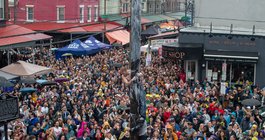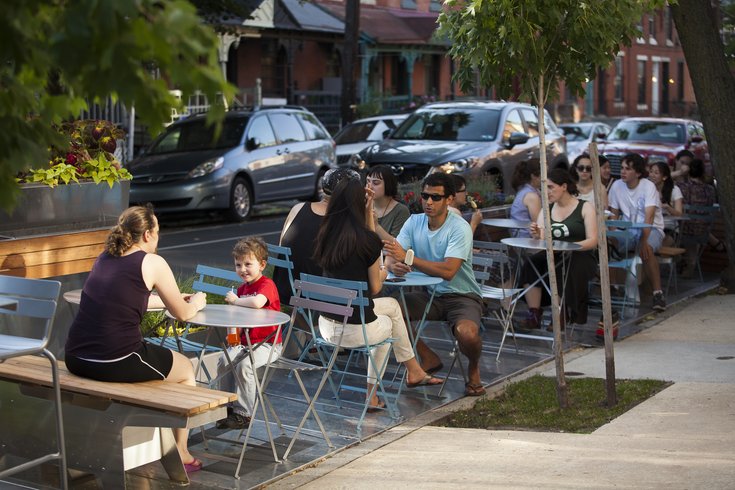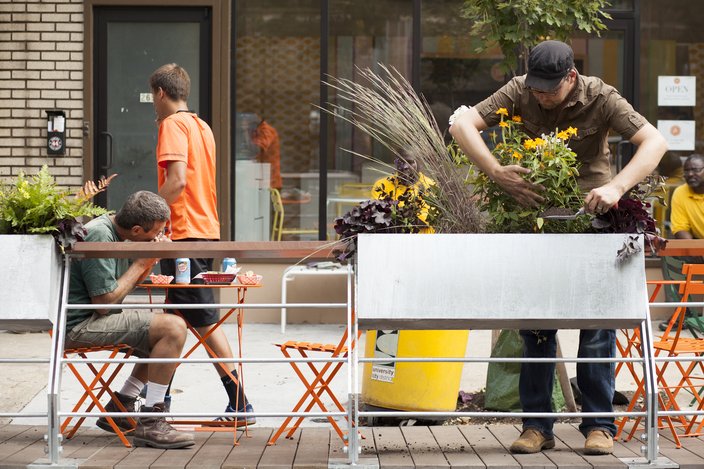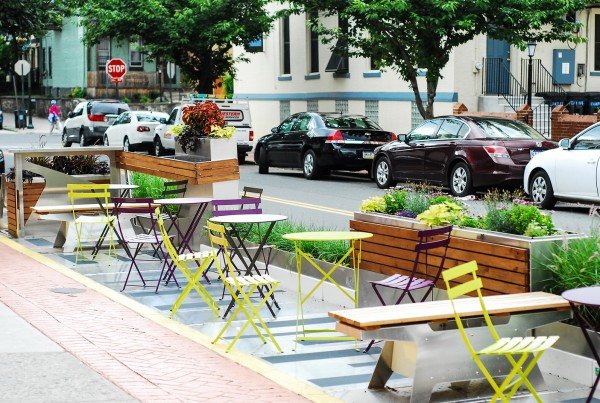
March 27, 2015
 Ryan Collerd/for PhillyVoice
Ryan Collerd/for PhillyVoice
Parklet users lounge at the 265 S. 44th St. parklet, located outside of Honest Tom's Taco Shop in University City.
Let's start by addressing this upfront: What, setting aside any and all urban-planning-speak, is a parklet?


Parklets are more than an obvious boon to business. They're also indicative of a larger trend toward urbanism and transforming spaces to be more engaging -- and new demographics taking back cities.
"The past four or five years are what I call ‘return to urban.’ Baby boomers, empty nesters and millennials are abandoning the sterility of the suburbs for the richness of cities, and they’re polishing these spaces," Harris Steinberg, executive director of the Lindy Institute for Urban Innovation at Drexel University, told PhillyVoice.com.
Philadelphia, he says, is ripe for this "polishing" -- a fine-tuning also reflected by efforts like PHS's beer gardens and 30th Street Station's "The Porch" -- because of its post-industrial makeup, university population and changing means of transportation.
It's ingrained in a larger narrative.
"Parklets are all part of that greater sense of, ‘How do we open up the public realm to the pedestrian and the cyclist, and not just leave it to the car?’" Steinberg says. "It’s an interesting time of transformational change, and I think outdoor seating is a key piece of that. You only have to go to the great plazas of Spain to see that we like to sit out and watch people."
Parklets, in particular, are part of a movement toward "tactical urbanism," he says. Translation: Low-cost and temporary approaches are being taken to alter a streetscape depending on the environment surrounding it. (The "temporary" bit finding success in this case, because parkers can still enjoy their space for four months of the year.)
It's also, he says, an extension of what urbanist William Whyte (fun fact: a West Chester, Pa., native) established decades ago, which is that making chairs movable -- not bolted down, like with a bench -- is a key function of making a space more engaging and moldable over time.
“It’ll be interesting to see if parklets become institutionalized. So, 'Who’s actually in charge of them?' In this case, it's UCD -- but they need a steward for long-term," he says. "Or, is this a transitional moment, in which case it’s ultimately about the public realm and what kind of investments we put into ‘shared streets’ – the Dutch are certainly doing that, and it's where the lines between the sidewalk, the street and their different uses become fuzzy.”
“You certainly don’t want a parklet on every block," acknowledges Nate Hommel, capital projects manager for University City District and a designer of some of the district's parklet interventions. "But there’s also no reason why we can’t have 30, 40 or 50 parklets citywide. There are so many opportunities across this city."
Time will tell whether parklets stick around or evolve into something else entirely. Though, of the parklets that have been established since 2011, nearly all have come back for additional seasons. Cara Ferrentino, manager of strategic initiatives for the Mayor's Office of Transportation and Utilities, told PhillyVoice.com that all nine of this year's proposed parklets are returning from previous years, with about five newcomers expressing interest. One of those proposals, also for University City, calls for a parklet that's 65 feet in length -- what would be the largest parklet in the country, Mario Gentile, CEO of Philly-based Shift Design (its designer), told PhillyVoice.com.
There's also the matter that, last September, Mayor Michael Nutter signed an amendment to the Philadelphia Code that legally recognizes and defines a parklet, as well as establishes the Pedestrian Enhancement Permit -- a one-time, $125 fee for applicants.
In which case, parklets will be popping up for the forseeable future.
"I definitely see in our long-term efforts, now that we have PEP in place, where we’ll streamline our internal review process for parklets so that we can make sure that there’s always a clear way for concepts to move through internal review here," Ferrentino says. "It’s going well, but we want to make sure it goes well in case we continue to see increased interest."
Hommel, meanwhile, sees parklets as -- if absolutely nothing else -- a gateway to a larger dialogue about long-term interventions and how the public engages with public spaces, including amenities we already use every day, like bus stops.
"I think the goal here is that you find a space that is just so perfect for these kinds of interventions that you can use them as a way to say, ‘Maybe we can do a more permanent intervention at this location?’ And that’s the end goal," he says. "But even if it never happens, we love that parklets bring life to these spaces from April to December. And, hopefully, they can lead to bigger conversations.”